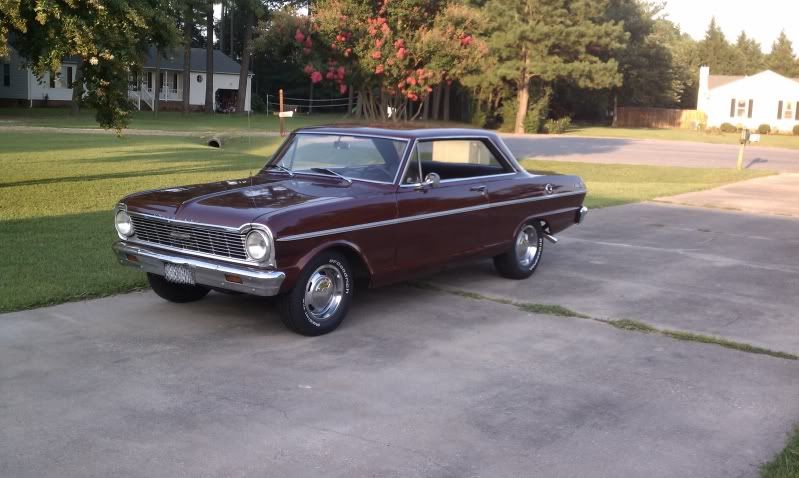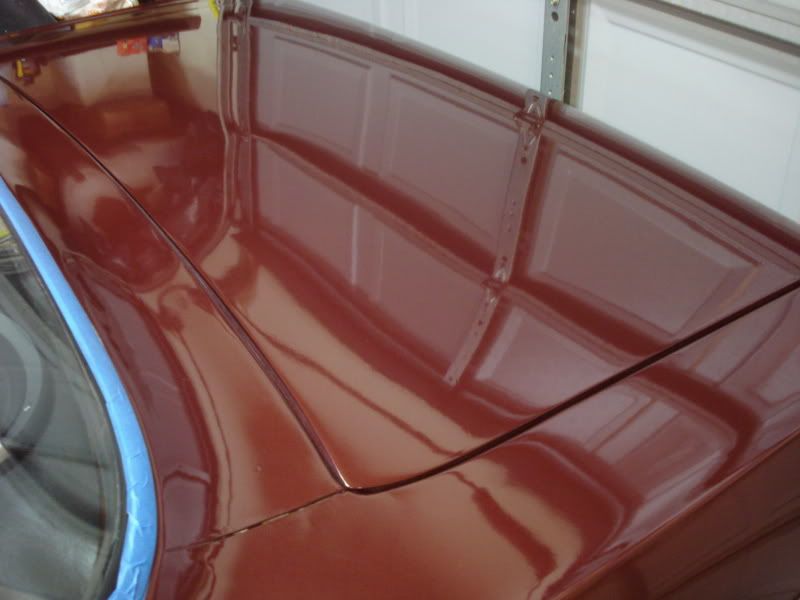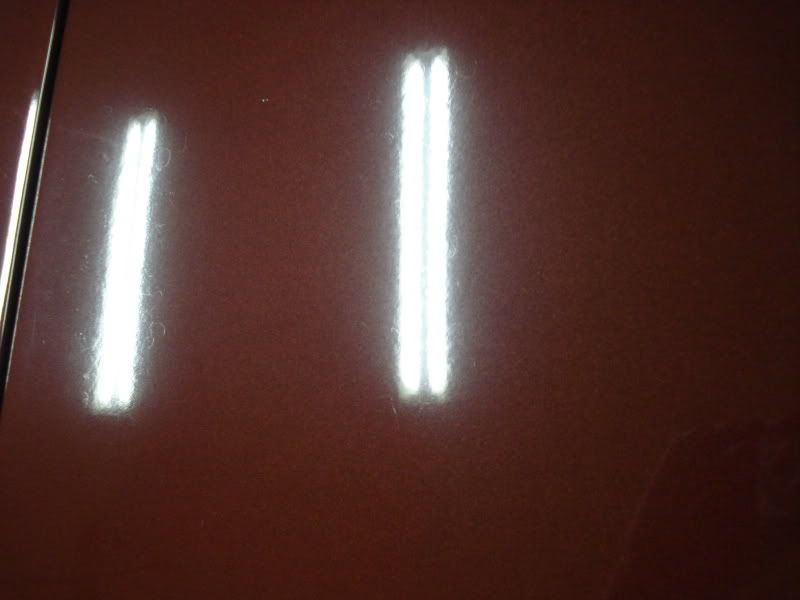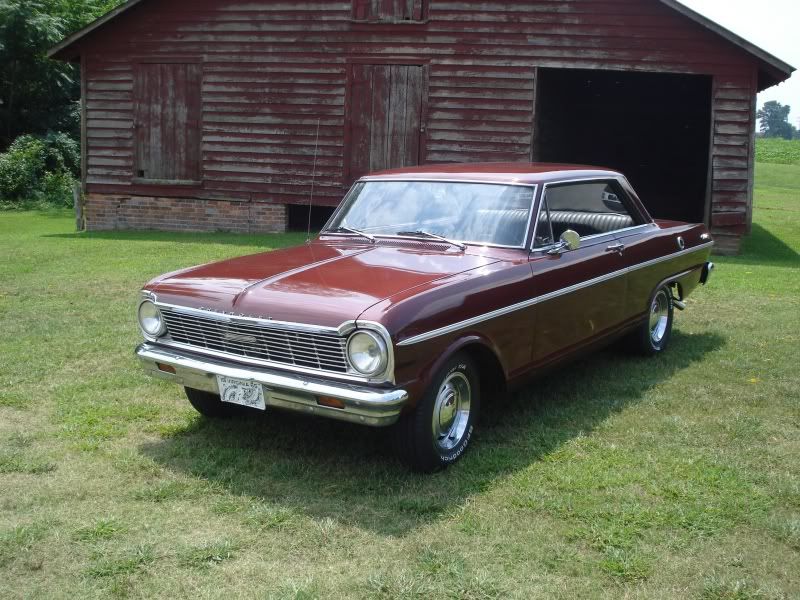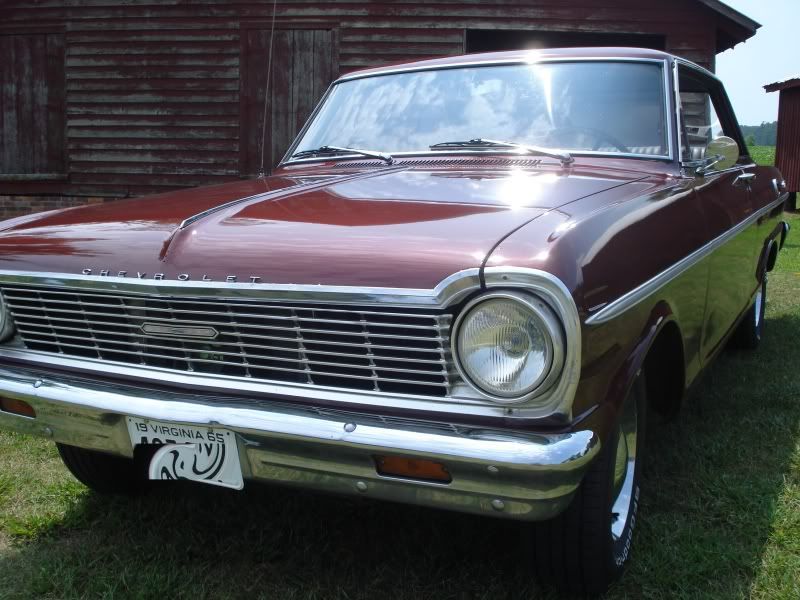In this thread
How To Remove Sprinkler Water Spots
I have some pretty good pictures of
water spot imprints
Here's an excerpt from the above thread...
These water spots look like they're
established water spots, that every time it rains, or a sprinkler goes off, the water pools in the same place giving any corrosive substances repeated opportunity to etch into the paint.
Visually, I can tell the paint is likely etched in this instance but I won't know till I get the surface clean. The first step is to wash or wipe the finish, in this instance I'm going to repeat wiping process I used on the Mercedes-Benz with a spray detailer.
After wiping the paint clean, there are
water spot imprints remaining in the paint.
The paint on this car is a basecoat/clearcoat finish but it still gets imprint rings like a single stage.
The more common water spot that you get with older single stage paints are the type where the paint looks faded or whitish where the water pooled and then dried, like shown in this article,
3 - Types of Water Spots - Type I, Type II and Type III
Type III Water Spots
Type III Water Spots are spots that look faded or dull and are found primarily found on
single stage paints after a water source lands on and then pools on the paint and is usually left to dwell on the surface for some measure of time before it evaporates or is wiped-off the surface.
Modern clear coat paints tend to be harder and impermeable, that is non-porous, so liquids don't penetrated easily and thus stain spots tend to be topical, that is only affect the very upper surface and are easier and safer to remove with a compound or polish.
Older single stage paints tend to be soft and permeable, or porous, it's common for liquids to penetrate into the paint and stain the paint below the surface. Removing stains out of single stage paints can be risky because in order to remove the stains you have to abrade the paint and if the stains penetrated deep then you risk removing too much in an effort to try to remove them completely.

